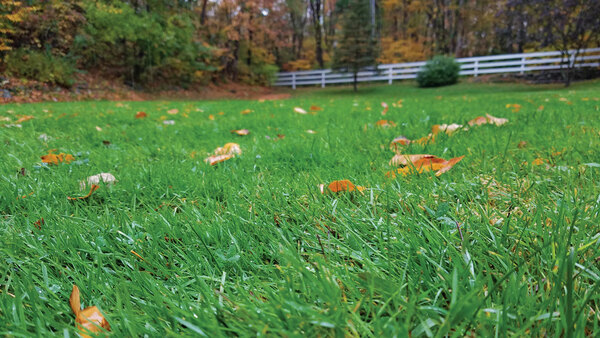Anyone with a lawn knows that at some point, it will need maintenance, including patching or reseeding. Generally, wheat straw is used on the patch to offer some protection to the area after seeding. However, it isn’t always best. It can introduce more problems to your lawn, and can also easily be blown away by wind. When it comes to renovating your lawn, there are a few tried and true methods that will (hopefully) bring you success. Whether you want to seed or lay down sod, we can help. Read this article for helpful lawn renovation tips.
Landscape renovation can be a daunting task. You’ve inherited someone else’s 30-year-old yard, and you don’t know where to begin. The walkway to the front door is barely visible as the plants and lawn vie for the same space. Or maybe you did the landscaping 30 years ago and the house has slowly disappeared behind a jungle of plants.
Whatever your scenario, professional landscape designer Sara Jane von Trapp gives you the tools to tackle renovation in The Landscape Makeover Book: How to Bring New Life to An Old Yard. In this excerpt, you’ll find information on renovating the lawn, whether seeding or laying sod.
Whether you’ve made major grade adjustments or are just filling in minor depressions, chances are you’ll have lawn areas that need to be fixed. This is a good time to take a look around your yard to see if there are other bare spots or sparse areas that need attention. Renovating the lawn can be done by either seeding or laying sod. Read more.
How to Patch a Lawn With No Weeds
Learn a better way to patch your lawn with this helpful tip.
Materials Needed and Process
Cheesecloth
Grass seed
Floral pins
Golf tees
Next time you place seed on an area of your lawn, put down cheesecloth instead of straw. Cheesecloth won’t introduce any problematic seeds. It provides good protection from sun exposure to help keep moisture on the seeds. Cheesecloth also provides a good barrier against birds or insects who might try to eat the seeds.
If you’re concerned about wind, you can use floral pins or golf tees to stake down the edges of your cheesecloth. Once your cheesecloth is in place, water the area, and then wait for the grass seeds to germinate. Once the seeds have germinated, you can remove the cheesecloth. Enjoy your newly patched lawn!


















Comments
Log in or create an account to post a comment.
Sign up Log in